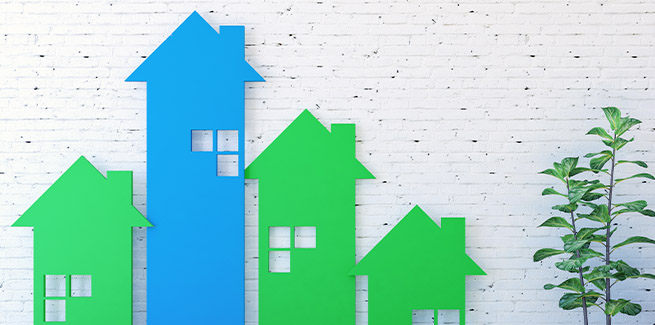While CoreLogic’s national Home Value Index recorded a 0.6 per cent gain in February, the pace of growth had slowed since April 2021 and marked the lowest monthly reading since October 2020.
As the trend in housing value loses pace, the annual growth value fell in February to 20.6 per cent, from what is “likely” to be the peak rate of annual growth recorded at 22.4 per cent in January.
The major capitals had the sharpest slowdown, with Sydney posting the first decline in housing values since September 2020 down 0.1 per cent, while Melbourne’s housing values were unchanged over the month, and recorded an incremental rise of 0.2 per cent over the past three months.
Stronger housing market conditions were recorded in Brisbane and Adelaide and Hobart, where housing values rose by more than 1.0 per cent in February.
In fact, over the three months to February, Brisbane’s housing value rose 7.2 per cent, while Adelaide went up 6.4 per cent.
Regional markets remain strong
Regional Australia continues to record a substantially higher rate of growth than the capital cities.
Over the past three months, housing values across the combined rest-of–state regions increased (up 5.7 per cent), compared to combined capitals that rose 1.8 per cent.
Although the rolling quarterly rate of value growth remains rapid across regional Australia, conditions have eased from its recent peak of 6.4 per cent over the December quarter and is down from a cyclical peak of 6.6 per cent recorded in April last year.
CoreLogic’s director of research, Tim Lawless, said demographic tailwinds, low inventory levels and ongoing demand for coastal or tree-change housing options are continuing to support strong upwards price pressures across regional housing markets.
“Regional housing markets aren’t immune from the higher cost of debt as fixed-term mortgage rates rise,” Mr Lawless said.
“These markets are also increasingly impacted by worsening affordability constraints as housing prices consistently outpace incomes.”
Despite rising global uncertainty, amid tighter monetary policy settings, Mr Lawless said the slower growth conditions in Australian housing values go “well beyond” the rising expectation of interest rate hikes later this year.
“The pace of growth in housing values started to ease in April last year, when fixed-term mortgage rates began to face upwards pressure, fiscal support was expiring and housing affordability was becoming more stretched,” Mr Lawless said.
Property listings down
A shortfall of properties advertised in February (down 13.3 per cent compared to last year), demonstrated an ongoing “shortage of available housing” to purchase.
Despite the low total listing count, Mr Lawless said advertised supply levels are gradually “normalising” after tracking close to 25 per cent below the prior years’ level before September 2021.
In Melbourne, advertised stock levels are now above average, tracking 5.5 per cent higher than a year ago and 4.7 per cent above the previous five-year average, with a similar trend reported in Sydney, with total advertised stock 6.3 per cent higher than last year.
Total listings across Brisbane and Adelaide remain more than 20 per cent lower than a year ago and the combined rest-of-state markets continue to see low advertised supply, up to 24.9 per cent below last year and almost 45 per cent below the five-year average.
Meanwhile Darwin saw the highest increase in advertised stock, up 23.5 per cent above last year.
Mr Lawless said more choice translates to less urgency for buyers and some empowerment at the negotiation table.
“The cities where housing values are rising more rapidly continue to show a clear lack of available properties to purchase,” Mr Lawless said.
[Related: House and unit values widen to record disparity: CoreLogic]
 ;
;
